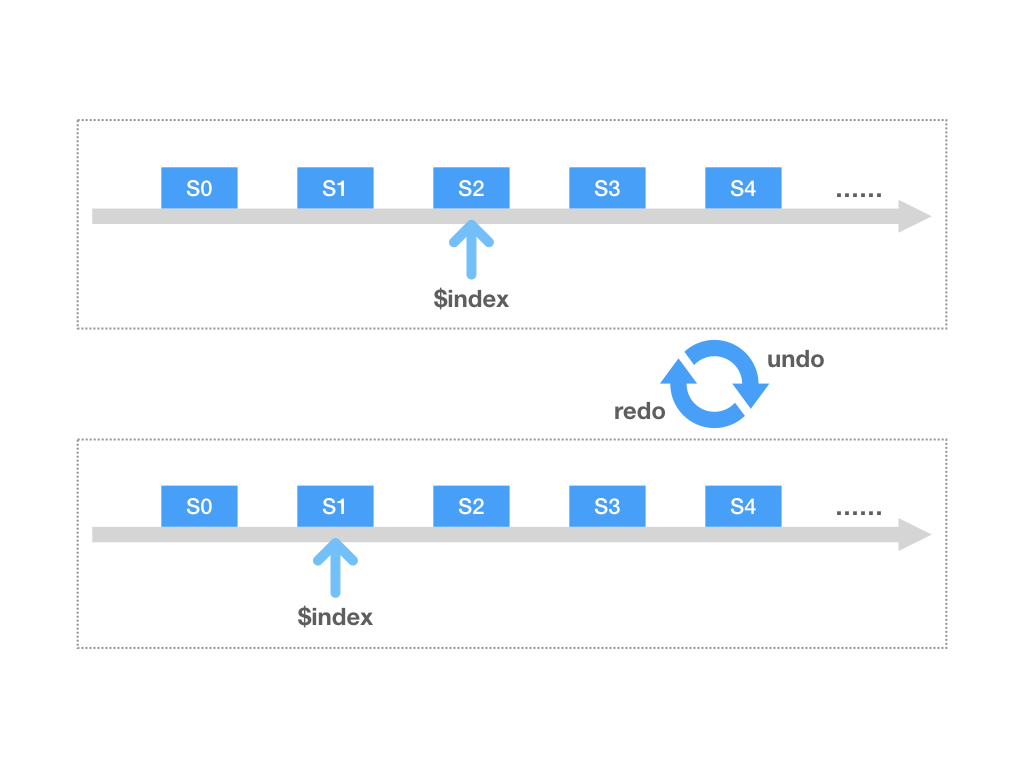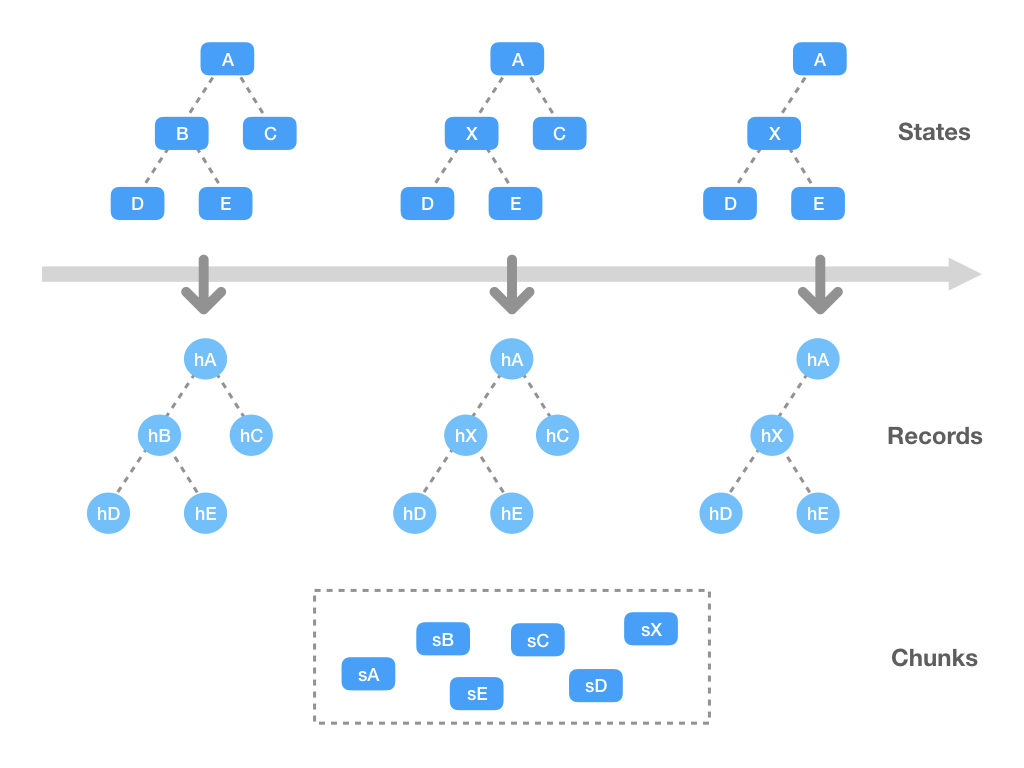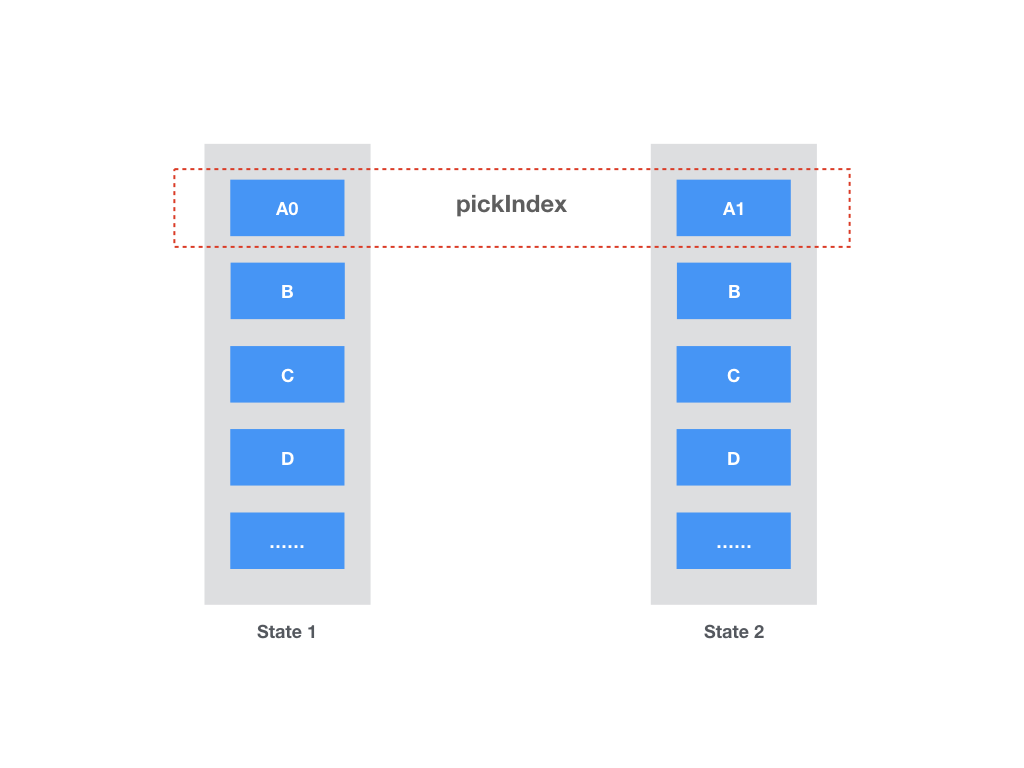StateShot
Just push your states into StateShot and
undo/redothem!
Getting Started
Install via NPM:
npm i stateshotBasic usage:
import { History } from 'stateshot'
const state = { a: 1, b: 2 }
const history = new History()
history.pushSync(state) // the terser `history.push` API is async
state.a = 2 // mutation!
history.pushSync(state)
history.get() // { a: 2, b: 2 }
history.undo().get() // { a: 1, b: 2 }
history.redo().get() // { a: 2, b: 2 }Concepts
For history state management, the top need is the undo / redo API. That's what StateShot provides out of the box, which can be simply described in image below:
Trivial, right? While in real world projects, the price on saving full state is high. Immutable data structure is known to be suitable for this, since it can share data structure in different references. However, this requires fully adaptation to immutable libs - can be aggressive indeed.
StateShot supports sharable data structure under its tiny API surface. The core concept is to serialize state node into chunks, computing chunks' hash and share same space if hash meets:
Besides the flexible rule-based transforming StateShot supports, it also provides another low-hanging fruit optimization for SPA apps. Suppose your root state is composed of multi "pages", editing on one page does not affect other pages. In this case computing hash on full state is inefficient. As a solution, you can simply specify a pickIndex on pushing new state, telling the lib which page to record:
With this hint, only the affected child's hash will be re-computed. Other children simply remains the same with previous record.
API
History
new History(options?: Options)
Main class for state management, option includes:
-
initialState- Optional initial state. -
rules- Optional rules array for optimizing data transforming. -
delay- Debounce time forpushin milliseconds,50by default. -
maxLength- Max length saving history states,100by default. -
useChunks- Whether serializing state data into chunks.trueby default. -
onChange- Fired when pushing / pulling states with changed state passed in.
If you want to use StateShot with immutable data, simply set
useChunkstofalseand new reference to state will be directly saved as records.
push
(state: State, pickIndex?: number) => Promise<History>
Push state data into history, using pushSync under the hood. state doesn't have to be JSON serializable since you can define rules to parse it.
If pickIndex is specified, only this index of state's child will be serialized. Other children will be copied from previous record. This optimization only happens if previous records exists.
pushSync
(state: State, pickIndex?: number) => History
Push state into history stack immediately. pickIndex also supported.
undo
() => History
Undo a record if possible, supports chaining, e.g., undo().undo().get().
redo
() => History
Redo a record if possible, also supports chaining,
hasUndo
boolean
Whether current state has undo records before.
hasRedo
boolean
Whether current state has redo records after.
length
number
Valid record length of current instance.
get
() => State
Pull out a history state from records.
reset
() => History
Clear internal data structure.
Rule
{ match: function, toRecord: function, fromRecord: function }
By defining rules you can specify how to transform between states and internal "chunks". Chunks are used for structure sharing.
Rules are only designed for optimization. You don't have to learn or use them unless you've encountered performance bottleneck.
match
node: StateNode => boolean
Defines whether a rule can be matched. For example, if you're saving a vDOM state with different type field, just define some rules like node => node.type === 'image' or node => node.type === 'text'.
toRecord
StateNode => { chunks: Chunks, children: Children }
For matched node, chunks is the serializable data we transform it into, and children picks out its children for further traversing (By default we traverse the children field in each state node, you can customize this behavior by providing code like children: node.elements or so). Usually one chunk per node is enough, but you can split a node into multi chunks in this manner:
const state = {
type: 'container',
children: [
{ type: 'image', left: 100, top: 100, image: 'foo' },
{ type: 'image', left: 200, top: 200, image: 'bar' },
{ type: 'image', left: 300, top: 300, image: 'baz' }
]
}
// Suppose `image` is a heavy field, we can split this field as a chunk.
const toRecord = node => ({
chunks: [
{ ...node, image: null },
node.image
]
})fromRecord
{ chunks: Chunks, children: Children } => StateNode
Parse the chunks back into the state node. For case before:
// Recover state node from multi chunks.
const fromRecord = ({ chunks, children }) => ({
...chunks[0],
image: chunks[1]
})
const rule = {
match: ({ type }) => type === 'image',
toRecord,
fromRecord
}






